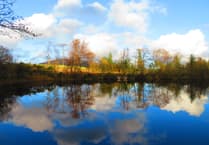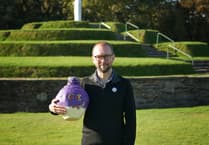The Isle of Man is the only entire nation to boast UNESCO Biosphere status, reflecting it is a special place for people and nature. In our regular feature, authors from different walks of Manx life offer a personal perspective on #MyBiosphere. This month, Timothy Dale, a ‘blue badge guide’ who runs History of Man Tours, writes:
As someone who was born in the Isle of Man, and has Thai ancestry, I have grown up with the best of both worlds. Having spent only a year of my life in Thailand, though, I feel like my roots are firmly placed in the Isle of Man.
The aspect of the Isle of Man I have come to appreciate more than anything else is the vast amount of history that is preserved on such a small Island.
The site that exemplifies this the most is the site at Chapel Hill, Balladoole, which you can access any time of the year without paying a fee for entry.
There is a unique combination here of a Bronze Age burial, an Iron Age hill fort, a Viking ship burial and the remains of an early Christian chapel, or ‘keeill’ as it is known in Manx.
With the discovery of middens, a posh name for a mesolithic rubbish dump, the history of this site could be extended to say that it was being used at the same time that Cashtal Yn Ard was being built.
The potential connection between the two is a mystery but, more mysteriously, we have no idea today of what made this place so important to three very different cultures and religions.
The Bronze Age burial cist, of which the Bronze Age describes the period of time very roughly between 3000BC and 1200BC, unfortunately didn’t have any grave goods found within it but fragments of a cremation urn were located a stone’s throw away in the remains of a Christian keeill, one of more than 200 examples that have been unearthed in the Isle of Man.
The Viking ship burial is the portion of the site that has yielded the greatest amount of information on the site. A wonderful exhibit in the Manx Museum describes and displays this find in great detail, from the significance of the site to the goods that were found there, and all this can be seen for free.
The significance of places like Balladoole to me? I can’t help but appreciate how the historical tapestry, woven since the first people came to live here after the end of the last Ice Age, has been preserved here for everyone to see, and for the vast majority of it, not a penny has been spent in order to do so.

-(1).jpeg?width=209&height=140&crop=209:145,smart&quality=75)


Comments
This article has no comments yet. Be the first to leave a comment.